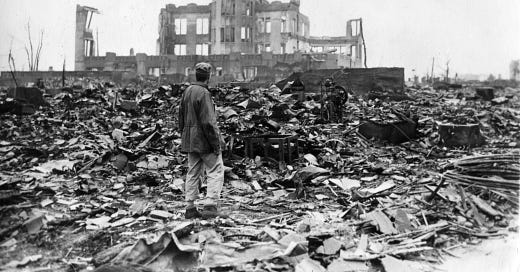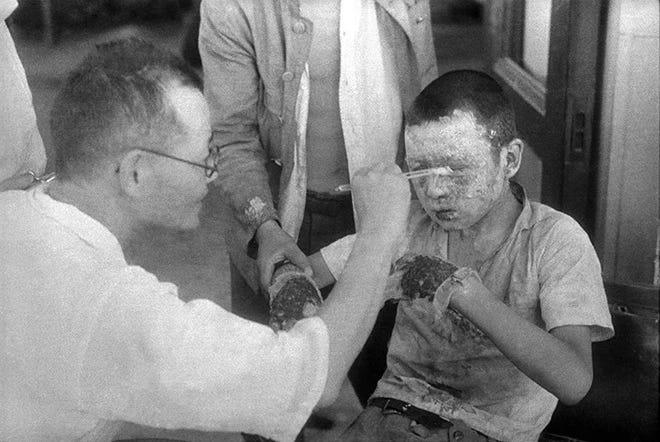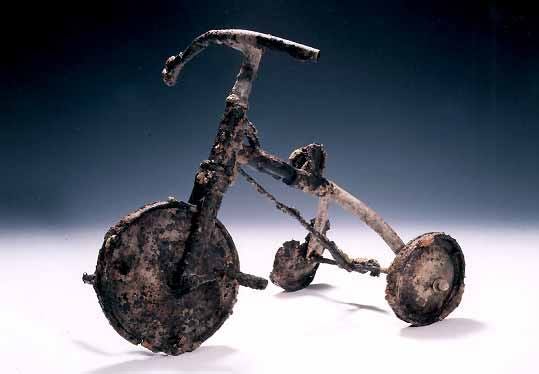August 6 and August 9 are solemn days, marking as they do the first and, thanks be to God, only wartime use—so far—of nuclear weapons.1
Although the term wasn’t around in 1945 when atomic blasts destroyed Hiroshima and Nagasaki, the two bombs surreally named “Little Boy” and “Fat Man” were genuine weapons of mass destruction. When they exploded over their targets, a quarter-million people instantly vaporized. Tens of thousands more perished later from wounds, radiation sickness, and radiation-induced cancer and birth defects. All this carnage from two bombs whose killing power, when compared to today’s nuclear weapons, was really quite modest.
Although they should be two of the most remembered days of the year, days in which we mourn all victims of war and honor them by resolving to turn our swords into plowshares, the anniversaries of Hiroshima and Nagasaki increasingly pass unobserved, at least in this country. When they actually are noted, they too often get hijacked by liberal and conservative pundits squabbling over whether dropping the bombs was a “military necessity.” The heat of these ideological feuds can easily distract us from a full appreciation of the savage enormity of destruction wrought by the two blasts.
We tend to be unmindful of the anniversaries for temporal as well as spatial reasons. Our historical memory is short. The bombings were seventy-nine years ago, and most who were alive in 1945, and who could help keep the memory of Hiroshima and Ngasaki fresh, are passing quickly. Moreover, the two atomic blasts exploded on the other side of the world, far away from North America in both distance and culture.
Perhaps we would be more aware of the two anniversaries if we stopped to consider that they’re actually much closer to us than we think. It’s entirely likely that at some time or other in our lives, we’ve all breathed in airborne particulates of the two cities’ vaporized victims The mushroom clouds that rose over Hiroshima and Nagasaki hurled human flotsam and jetsam skyward. Winds then carried the dust around the globe, so that we who live inhale a bit of cruel death. The suffering of 250,000 of our sistes and brothers is, in a very real way, part of us.
The larger point suggested by our literal inhalation of Hiroshima and Nagasaki victims is that each human being on the face of the earth is intimately and inextricably linked to everyone else. As John Donne famously noted, no person is an island. We share the same air, tread the same earth, have the same basic human experiences. This isn’t just because we’re all members of the same biological species. More fundamentally, it’s because we’re tied together spiritually. We’re siblings who share the same divine Parent.
The Christian expresses this unbreakable kinship in terms of the “Body of Christ,” and the Buddhist through the notion of “inter-being.” But both Christians and Buddhists believe that when some of us suffer, all of us feel—or would, if we were mindful—a ripple of pain. Likewise, when others of us rejoice, we all—or at least should—feel their happiness.
Whether we acknowledge it or not, in every second of the day, with each breath we take, we inhale all humans who have ever lived. We take in the pains and the joys of all humankind, and humankind in turn is sustained by the breath, the spirit, the pneuma, of God.
It’s good to set aside certain days to recollect our deep bond with all other humans, as well as, for those of us who are religious, our shared dependence on God. The anniversaries of the nuclear nightmare that descended on our Japanese sisters and brothers in 1945 offers us that opportunity. In honoring their memory, especially and poignantly on a day in which Catholics also observe the Feast of the Transfiguration, we embrace them as kin, we listen deeply to their stories, and we resolve to do better.
Adapted from my Faith Matters: Reflections on the Christian Life (Eugene, OR: Cascade, 2019), pp. 90-91.







